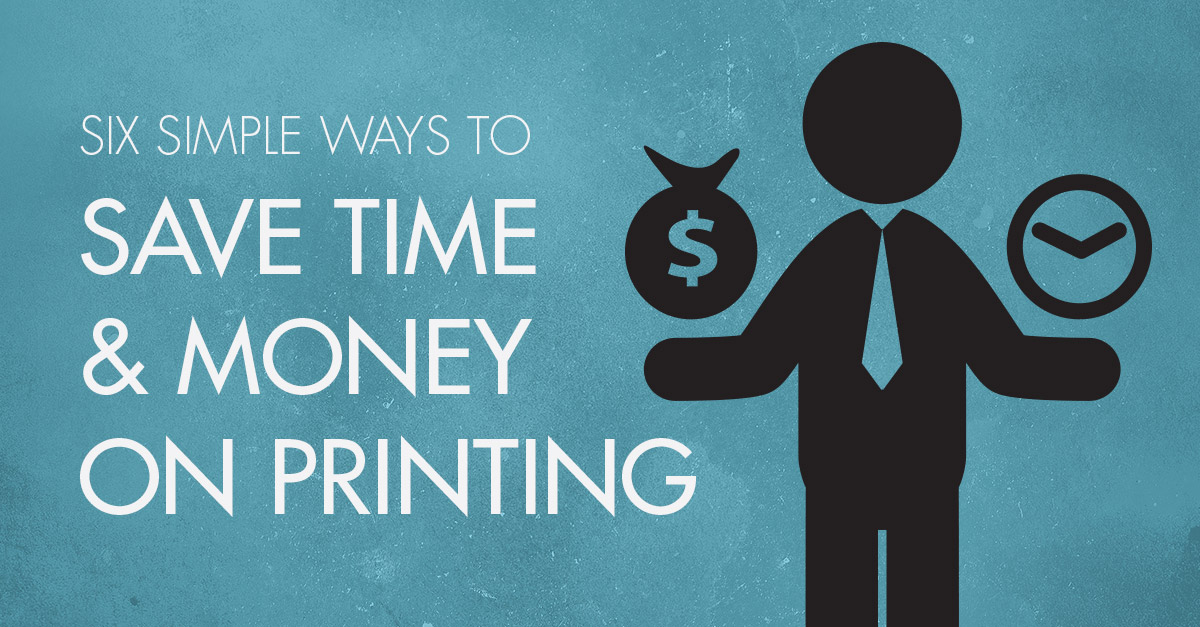
For a lot of businesses, printing can be a fairly expensive endeavor. However, there are things that can be done that can greatly reduce your costs. Here are a few simple ways to save time and money on your next print project.
1. Plan in Advance
This may be hard for all you last-minute people, but it’s no secret that rush orders are quite a bit more expensive than regularly paced jobs. Build a week (or more, if you’re cautious) into your timeline for a project as an absolute necessity, and everyone will be a little happier. It’s likely that your printer can turn it around in less time depending on the specifications of the job, but there’s no sense in taking the risk when it’s a headache that can usually be gracefully avoided. Remember Murphy’s Law: Anything that can go wrong, will go wrong. Make sure you buffer enough time to be able to deal with catastrophes (whether they’re likely to occur or not).
2. Adjust Document Size
Commercial presses print multiple impressions of a job on large sheets of paper, called parent sheets. Your printer will do everything they can to get the most items on one sheet. It reduces the time it takes to print a run and the costs associated with it, which turn into real savings for you. Sometimes, you can change as little as half an inch and reap the benefits. If you’re running a project with bleeds and you have the flexibility to dictate the size, it’s worth asking the printer how you can work together to run the job most efficiently.
3. Be Open to Alternate Suggestions
This goes hand-in-hand with the above tip. Being flexible is a great money-saver, and sometimes your printer can make alternate suggestions that don’t degrade the quality but are a lot less expensive. For example, many printers have a house stock of paper that they always have on hand. This means that there are no ordering and shipping costs for a particular type of paper, and since the printer buys the house stock at such bulk rates, you see those savings, as well.
4. Have Your Artwork Ready
Different printers may require different things to get your project going, but the easiest way to save time and money overall is to have the files prepared for print before they are delivered. What does this mean? Well, any printer worth dealing with will accept your files in the form of a PDF. PDF stands for “portable document format”. It embeds all the fonts (key for getting your document to print correctly) and can get larger or smaller with a lot less fuss than, say, a JPEG. It’s worth the few minutes it takes to have a representative from the printer walk you through the steps, or to research how to convert the files online. Your file is probably going to end up as a PDF anyway, but this way, you don’t have to pay a designer to do something that only takes a few moments. In addition to PDFs, there may be other file formats your printer accepts. Want to know which file formats are never acceptable? PowerPoint, Word documents, and low-resolution Photoshop formats top the list. A few minutes of learning goes quite a long way to getting the best price, experience, and product you can.
5. Know Which Press is Best
Digital presses have come a long way since their inception to produce high quality prints, quickly. They work together with offset presses to form a complete team, suited to your individual needs. If you have a short (usually less than 5,000 ct) run with a lot of colors, digital can be the right solution for you. There’s no initial set-up cost (so the per-unit price stays consistent) and are perfect for lower quantity requirements. For large runs, the per-unit price for offset printing counterbalances the initial set-up fee. Going in with that in mind, and being flexible, can help keep your overhead lower.
6. Ask Ask Ask
You may feel unsure about asking questions or having your printer take the time out to explain things to you, but remember: we’re here for you. The more willing you are to ask questions and absorb information, the more efficient the process can be in the future. Additionally, asking questions guarantees that you’re on the same page as your printer and can help reduce the amount of miscommunication and mistakes that occur naturally.
Conclusion
If you keep these simple steps in mind when placing your next printing order, you will no doubt save your business both time and money. Here at AlphaGraphics Seattle, we pride ourselves on our ability to deliver high quality prints with quick turnaround times at competitive prices. We would love to work with you on your next printing project. Don’t hesitate to get in touch!

